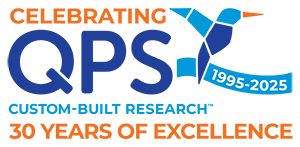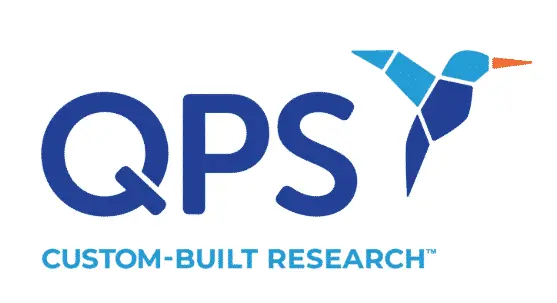Although we’ve made great progress in our understanding of the central nervous system (CNS) and the disorders that affect it, CNS drug development continues to pose many challenges. The high failure rate may seem discouraging, but it’s important to remember that failure is an inevitable component of innovation. With Alzheimer’s and other forms of dementia on the rise, it’s time to double down on CNS drug development. According to the Alzheimer’s Association, 5.8 million Americans are currently living with Alzheimer’s, and that number is expected to jump to nearly 14 million by 2050. Whether you’re part of a large pharmaceutical company or a small biotech company, our industry needs to work toward accelerating pharmaceutical breakthroughs for CNS disorders. The three important lessons below can guide companies seeking to make a difference in the world through CNS drug development.

Accelerating Pharmaceutical Breakthroughs for CNS Disorders
Lesson 1: New Strategies Are Required
Innumerable ideas have been tested in labs seeking pharmaceutical breakthroughs, but that doesn’t mean the quest has ended. Research into Alzheimer’s drugs has focused on treating the disease and its symptoms. To move forward, we may need to take a step back and focus on identifying the cause of Alzheimer’s so that we can delay or prevent the disease’s onset.
Prominent scientists around the world have widened their focus, using new strategies in an attempt to detect Alzheimer’s in its silent biological stage. Their areas of concentration include radical stress, brain inflammation, lipid metabolism, and the importance of neurofilaments or small brain lesions. Current research often revolves around amyloid and tau, but finding and exploring additional new targets could prove rewarding.
While it’s too early to explore combination therapies, it’s possible that effective Alzheimer’s treatments will involve multiple therapies. Savvy, forward-thinking companies are developing new ideas, compounds, and targets and exploring the possibility of combining new drugs with known medications. Why not join them? When hope and curiosity combine with ingenuity and hard work, anything is possible.
Lesson 2: Experience Matters
One of the greatest problems in our industry is that only positive results are published, which makes it very difficult to learn from (meaningful and revealing) negative results. When small biotech companies begin testing new compounds, they may waste time and resources exploring ideas that have already proved fruitless. To prevent this, a small biotech company can partner with a contract research organization (CRO) with rigorous, extensive experience in the development of drugs for CNS disorders.
At QPS, we have tested thousands of CNS compounds, many of which have reached late-phase development. In fact, approximately 10 percent of all medicines currently in development for Parkinson’s disease, Huntington’s disease, Alzheimer’s disease, and other forms of dementia have passed through the hands of QPS scientists. We have tested approximately 2,000 compounds specific to neurodegeneration and neuropathy, and nearly 50 of those have advanced to clinical development.
Our talented team has learned something from every compound we have tested, and we can use our three decades of experience in early drug development to help your company explore and innovate.
Lesson 3: A Single CRO for Early Development Is Crucial
When companies use one CRO to conduct in vitro studies and another CRO for in vivo studies during early drug development, the two sets of data may not align with one another. If the in vitro study is designed in a vacuum, the in vivo study will be less predictable and may produce a disappointing outcome. For this reason, it’s important to work with one CRO during early development. The more the in vitro model reflects the in vivo model and the human disease, the better the predictability.
At QPS, we design in vitro and follow-on in vivo studies using closely related models to ensure consistency. And once we’ve viewed the effects in one in vitro set-up, we often recommend additional in vitro models to increase the likelihood of finding the right in vivo model and conditions and to boost the probability that the compound is clinically relevant before we move to in vivo research.
The same team of QPS scientists follows the study from in vitro to in vivo, ensuring they understand the study’s progression and can make valuable recommendations as it proceeds. With their deep knowledge and long history of our animal models, our scientists can develop corresponding cell models and guide clients as they test new compounds in vitro and advance to in vivo.
In addition to pharmacological research, QPS can use biomarkers to support drug development and assess drug efficacy and safety. We work with our clients to determine best practices for conducting biomarker studies to support preclinical research and clinical trials.
_____
After 1,000 unsuccessful attempts at inventing the light bulb, Thomas Edison said, “I have not failed once. I have succeeded in proving that those 10,000 ways will not work. When I have eliminated the ways that will not work, I will find the way that will work.”
Although the failure rate in CNS drug development is high, don’t let it discourage you. Look at your failures as valuable steps on the road to pharmaceutical breakthroughs.
Are you looking for a specialty CRO that can improve the quality of your outsourced clinical work and reduce your oversight requirements? Check out QPS, a leading CRO with unparalleled experience with bio-pharmaceutical companies of all sizes. At QPS, we believe in developing trusting, respectful, and long-lasting relationships with our clients. We are AAALAC accredited and always scientifically up to date. To learn more, please contact QPS at 1-512-350-2827 or e-mail us at info@qps.com.







